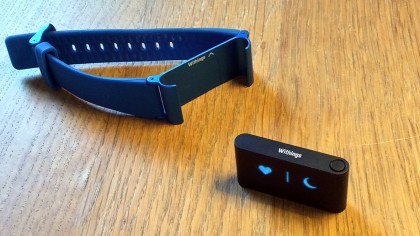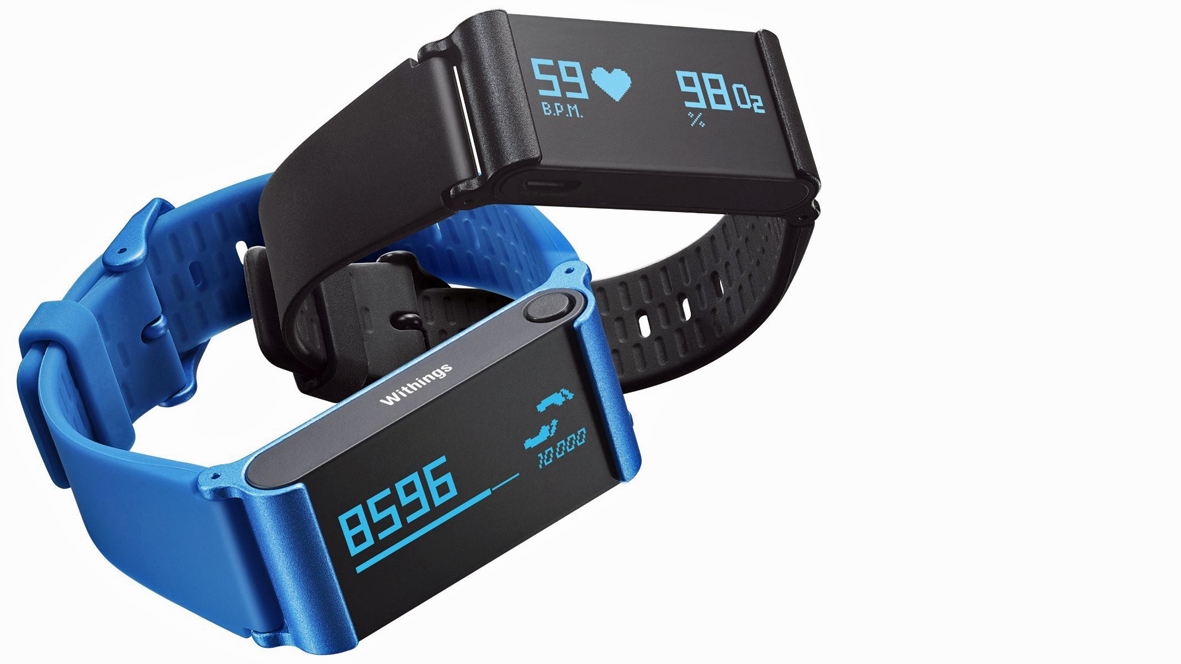TechRadar Verdict
With excellent battery and at an attractive price, this is another very strong fitness tracker, so long as you don't mind the inherent limitations of this kind of device
Pros
- +
Strong design, and can be clipped around the body if you don't want it as a watch
- +
Easy to use
- +
Fun, bright-'n'-breezy, informative app
- +
Accurate enough step counting
Cons
- -
Another sleep tracker that seems to just measure how long you're horizontal
- -
Despite the name, blood oxygen levels aren't a big part of this device's allure
- -
Has pretensions/potential to be a proper runner's tool, but doesn't really deliver on that
Why you can trust TechRadar
I've staked a claim that 2015 is officially The Year of Moving About a Bit More. With the huge number of fitness trackers available today, there's simply never been less of an excuse to keep on top of your general health.
If you read my recent review of the Garmin Vivosmart, you'll have seen that my current kick up the bum comes courtesy of jazzy straps around my wrist, and there's few more jazzy than the Withings Pulse Ox. This was previously known as the Pulse O2 – and can still be purchased as such online – but it had to change its name due to, er, threat of legal action from O2.
I've had this benefit band on test since Christmas ("Last Christmas, I gave you my heart, and the very next day, you automatically plotted the readings into a fun graph") when I was, shall we say, over-indulging a tad. Now, as a motivated, healthy January comes to a close, is it still inspiring me to keep upping my steps into February and beyond? Let's see…

The kit
The Withings Pulse Ox is an intuitive device than can be used as both a band and, once removed from its strap, a clip-on tracker, like the original Fitbit that kickstarted this whole crazy "fitness tracker" thing.
It's easy to use straight out of the box, and charges very quickly. We're talking "shower and breakfast" quickly, and via a very discreet micro USB charging cable, rather than a comically enormous charger, as found on certain other devices. Just attach it to your laptop and leave it to juice.
Even better, once fully charged, it'll last well over a week before you need to plug in again.

The heart of the device is a lightweight rectangular box, which comes with a choice of blue or black straps. I had the blue version, which had the vibrant sheen of a Lumia smartphone. The pebbly unit fits very securely into the strap's casing and I didn't have any worries about it falling out – and, indeed, it didn't. It's not as discreet as the aforementioned Garmin VivoSmart band, but I quite liked it and it was comfortable enough throughout the day, although maybe a bit bulky in bed.
Sign up for breaking news, reviews, opinion, top tech deals, and more.
If you don't want to wear it as a watch at all, you can attach it to your waistband, collar or underclothes. The only real thing that was a bit disappointing from the outset was to find out it's not water resistant. You just kind of expect to not have to take this sort of thing off in the shower, which is easy to forget after a gym session. It hardly alone in this respect but it is an irritant.

Now to download the companion Withings Health app. Refreshing, bright, fun and modern, it's in many ways what you'd expect from a motivational hub in 2015, being intuitive enough that you don't need to be a tech expert to get stuck in.
In one way this is excellent: there's no complicated configuration - just fill in a few details about your age, weight etc, and there's handy tour guides aplenty – and you quickly feel at home working the device and app in tandem.
In another way, it's quite limiting: the info available, though beautifully presented, is quite basic, and you can't really delve into it – the graph showing your steps would feel so much more useful if you could "zoom in" to a specific period of activity.
Them's the breaks with fitness wearables, though: you either get an expensive running watch that tells you everything you could ever want to know about, or you get something that tells you how many steps you've taken, more or less.
Step to it
So what does it do? The rarer features of the Ox are a simple run analyser, heart rate monitor and blood oxygen level monitor and an altimeter to measure elevation. On top of that, there are the fitness band staples: a step counter, distance tracker, calories burned advisor, and something that claims to track the duration and quality of your sleep.
Step counting, perhaps what most 'move about a bit more' folks will buy this for, seemed to be accurate - 100 manually counted steps was measured as near-enough 100 steps. The data was easy to read on the OLED touch screen when inside (and very bright in a dark room), which was consistently reactive when tapping and swiping around between data screens – more so than the Vivosmart.
However, it did prove trickier to read outside even in daylight, albeit very foggy British January "daylight", and was very quick to go back to black (what you pay for such a long battery life), so you sometimes can't really take in the data before it's turned off again. It also provides motivation without being a pest; the Garmin VivoSmart would buzz regularly to order me to get moving, which begins to grate when you're at work, in a lift, in the khazi, etc.
The steps graph on the app, synced via a long screen press over Bluetooth, was presented very clearly with bright, groovy colours and information regarding elevation, distance, active hours and percentage of your goal reached. However, the elevation part is just given as a bit of extra detail, rather than as, for instance, a separate goal for climbing stairs or hills. Presumably
However, as seems to be the case with many general health trackers of this ilk, you should take the calories burned data with a pinch of salt. One one occasion, after 990 steps (9% of a daily goal of just 10,000 steps, and just under 1,000 metres of plodding) I was informed that I hand managed to burn off a whopping 2,162 calories; after rudimentary calculation in my head I started to worry I'd either need to stop moving for the day (thereby putting paid to my plans to buy milk) or eat a slice of pizza for every couple of steps to ward off the chance of wasting away into a skeletal heap.
It wasn't always as wildly inaccurate as that, but it never felt like it was erring on the side of understatement, and I wouldn't use it as a guide to how much to eat if I were on a proper calorie-counting type diet. A Fitbit would be a better option there, for sure.
Run tracking is one of the Ox's USPs, but I really couldn't recommend such a casual device for, say, serious marathon training. It's still disappointing, however, that one 10-miler was reported as 15 miles and then not logged anywhere despite me clicking to save it.
Unlike most running watches, it tries to detect when you're on a run, rather than you telling it so via a menu or button. That's a great theory, but I found it assumed anything up the first mile was just a brisk walk, and carried on counting steps. This is not a fatal flaw as the device can be paired with popular apps Runkeeper and MapMyFitness to get round the issue. I don't use these – I chose Endomondo in 2011 and can't tear myself away – but millions do.
